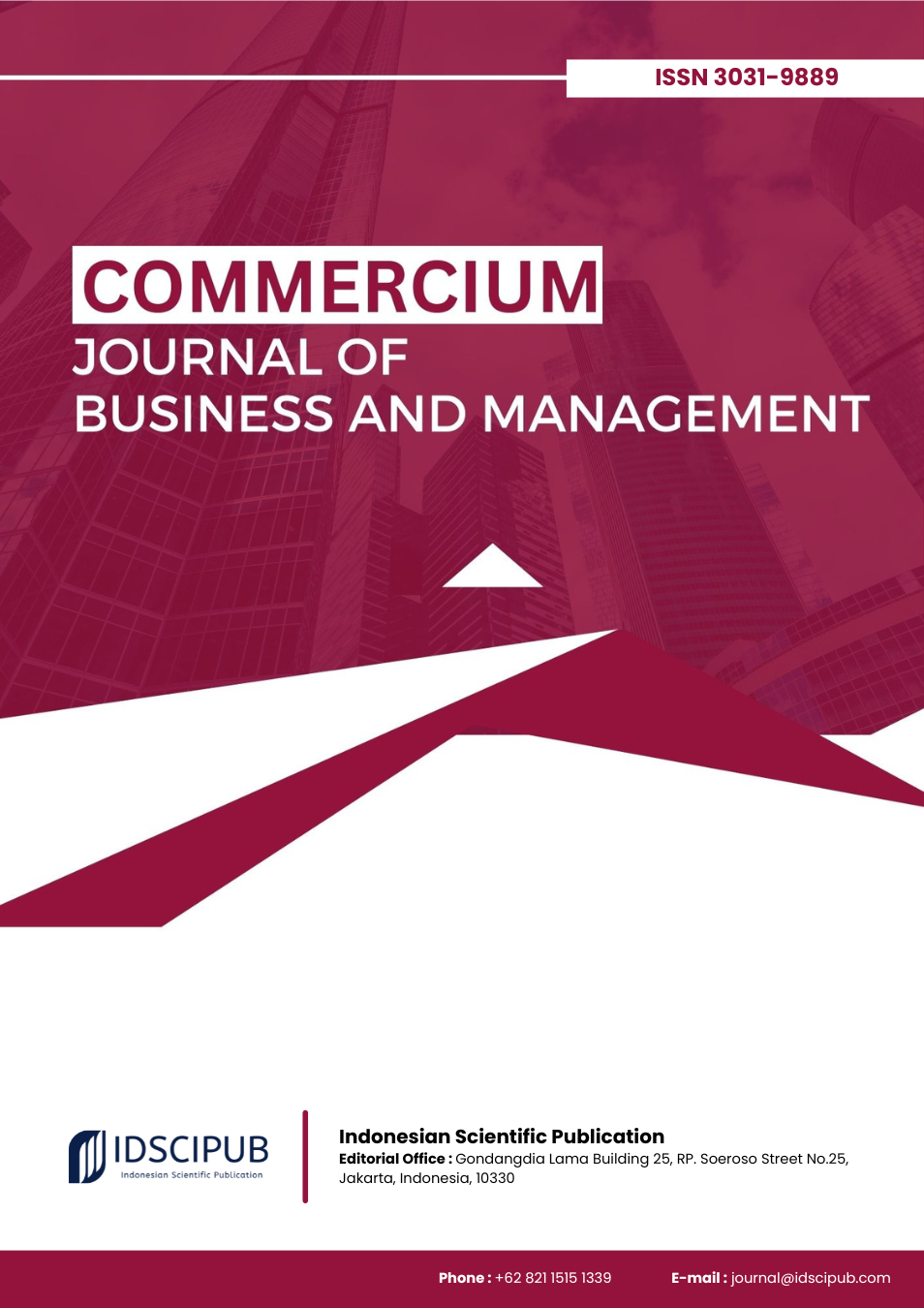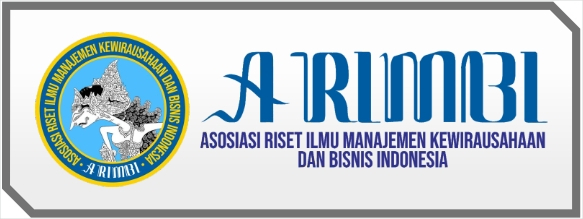Study of Improving Cluster Supply Chain Capability at PT. XYZ Through The Implementation of Digital Connectivity
DOI:
https://doi.org/10.61978/commercium.v3i4.713Keywords:
Digital Connectivity Cluster, Supply Chain, Operational EfficiencyAbstract
This study explores how digital connectivity can enhance the operational effectiveness of cluster-based supply chains, using PT XYZ as a case example. In an increasingly volatile and complex market environment, real-time data integration has emerged as a strategic necessity for supply chain agility and responsiveness. The findings reveal that digital connectivity significantly contributes to improving coordination, accelerating decision-making, reducing lead times by up to 30%, and lowering operational costs by approximately 20%. Central to this transformation is the adoption of Enterprise Resource Planning (ERP) systems, which enable predictive analytics, real-time inventory tracking, and scenario-based planning—tools that support both tactical and strategic decision-making. In addition, cloud platforms and collaborative digital tools further streamline communication across supply chain partners. Despite these improvements, the system at PT XYZ remains only partially automated, especially across geographically distributed clusters, pointing to the pressing need for unified digital integration. To address this gap, the study proposes a digital integration framework that emphasizes standardization of systems, infrastructure readiness, and change management strategies. Using a qualitative case study approach, the research draws on interviews, document analysis, and observations to evaluate implementation outcomes and identify key enablers and barriers. The findings offer practical insights for organizations seeking to enhance supply chain performance through digital.
References
Ameh, B., & Arowosegbe, O. B. (2024). Bridging the Gap: Innovations in Supply Chain Technology Through ERP Integration and Intelligent Automation. International Journal of Computer Applications Technology and Research. https://doi.org/10.7753/IJCATR1310.1001 DOI: https://doi.org/10.7753/IJCATR1310.1001
Braun, V., & Clarke, V. (2006). Using thematic analysis in psychology. Qualitative Research in Psychology, 3(2), 77–101. https://doi.org/10.1191/1478088706qp063oa DOI: https://doi.org/10.1191/1478088706qp063oa
Büyüközkan, G., & Göçer, F. (2018). Digital Supply Chain: Literature review and a proposed framework for future research. Computers in Industry, 97, 157–177. https://doi.org/10.1016/j.compind.2018.02.010 DOI: https://doi.org/10.1016/j.compind.2018.02.010
Chaffey, D., & Hemphill, T. (2019). Digital business and e-commerce management (7th ed.). Pearson Education.
Chopra, S., & Meindl, P. (2019). Supply Chain Management: Strategy, Planning, and Operation. Pearson.
Cresswell, J. W. (2016). Research Design, Pendekatan Metode Kualitatif, Kuantitaif, dan Campuran (4th ed., Vol. 4). Pustaka Belajar.
Freeman, R. E. (1984). Strategic management: A stakeholder approach. Pitman Publishing.
Gonzales Centon, J. M., Chávez Cubas, W., Berrio Huillcacuri, J., & Santos Maldonado, A. B. (2023). Business growth and its relationship with the profitability of a commercial MSE in Arequipa, Peru. Región Científica. https://doi.org/10.58763/rc202387 DOI: https://doi.org/10.58763/rc202387
Grant, O. (2024). Supplier Relationship Management in the Age of Digital Transformation: Insights from E-commerce Businesses. https://doi.org/10.20944/preprints202407.1099.v1 DOI: https://doi.org/10.20944/preprints202407.1099.v1
Hallikas, J., Immonen, M., & Brax, S. (2021). Digitalizing procurement: the impact of data analytics on supply chain performance. Supply Chain Management: An International Journal, 26(5), 629–646. https://doi.org/10.1108/SCM-05-2020-0201 DOI: https://doi.org/10.1108/SCM-05-2020-0201
Kim, S. T., Lee, H.-H., & Hwang, T. (2020). Logistics integration in the supply chain: a resource dependence theory perspective. International Journal of Quality Innovation, 6(1), 5. https://doi.org/10.1186/s40887-020-00039-w DOI: https://doi.org/10.1186/s40887-020-00039-w
Lee, H. L. (2004). The Triple-A supply chain. Harvard Business Review, 82(10), 102–112.
Li, P., Chen, Y., & Guo, X. (2025). Digital transformation and supply chain resilience. International Review of Economics & Finance, 99, 104033. https://doi.org/10.1016/j.iref.2025.104033 DOI: https://doi.org/10.1016/j.iref.2025.104033
Mirzaye Shirkoohi, S., & Mohiuddin, M. (2025). Creating Value in Metaverse-Driven Global Value Chains: Blockchain Integration and the Evolution of International Business. Journal of Theoretical and Applied Electronic Commerce Research, 20(2), 126. https://doi.org/10.3390/jtaer20020126 DOI: https://doi.org/10.3390/jtaer20020126
Nadkarni, S., & Prügl, R. (2021). Digital transformation: a review, synthesis and opportunities for future research. Management Review Quarterly, 71(2), 233–341. https://doi.org/10.1007/s11301-020-00185-7 DOI: https://doi.org/10.1007/s11301-020-00185-7
Pfeffer, J., & Salancik, G. R. (1978). The external control of organizations: A resource dependence perspective. Harper & Row.
Queiroz, M. M., & Fosso Wamba, S. (2020). The Role of Digital Connectivity in Supply Chain and Logistics Systems. In A Proposed SIMPLE Framework (pp. 79–88). https://doi.org/10.1007/978-3-030-44999-5_7 DOI: https://doi.org/10.1007/978-3-030-44999-5_7
Ren, J., & Zhang, Y. (2025). Research on the Impact of Supply Chain Digital Transformation on Enterprise Performance in the Context of Digital Economy (pp. 527–542). https://doi.org/10.1007/978-3-031-88294-4_52 DOI: https://doi.org/10.1007/978-3-031-88294-4_52
Sachs, J. D. (2006). The End of Poverty: Economic Possibilities for Our Time. Penguin Books.
Schwab, K. (2016). The Fourth Industrial Revolution (1st ed.). Crown Currency.
Victor, A., Svitlana, S. S., & Yulila, R. (2018). Cluster model of supply chains management and development of transport-logistics infrastructure. Transportation Management. https://doi.org/10.24294/tm.v1i3.798 DOI: https://doi.org/10.24294/tm.v1i3.798
Wang, M., Childerhouse, P., & Abareshi, A. (2024). Global logistics and supply chain integration in the digital era: a focus on China’s Belt and Road Initiative. Journal of International Logistics and Trade, 22(2), 58–79. https://doi.org/10.1108/JILT-03-2023-0018 DOI: https://doi.org/10.1108/JILT-03-2023-0018
Wernerfelt, B. (1984). A resource‐based view of the firm. Strategic Management Journal, 5(2), 171–180. https://doi.org/10.1002/smj.4250050207 DOI: https://doi.org/10.1002/smj.4250050207
Wook Kim, S. (2006). Effects of supply chain management practices, integration and competition capability on performance. Supply Chain Management: An International Journal, 11(3), 241–248. https://doi.org/10.1108/13598540610662149 DOI: https://doi.org/10.1108/13598540610662149
Yin, R. K. (2018). Case Study Research and Applications: Design and Methods (6th ed.). SAGE Publications.






